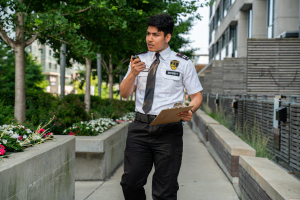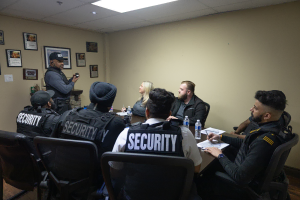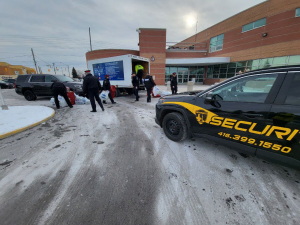Starting a neighborhood watch is one of the most effective ways to protect your street and bring people closer together. Many communities are feeling the pressure of rising break ins, car theft, and late night disturbances, and it can leave residents worried about what might happen next. A neighborhood watch gives people a way to look out for each other, share information, and create a safer environment without stepping into the role of law enforcement. When neighbors stay connected and alert, small actions can make a noticeable difference in preventing crime and keeping families at ease. In this guide, we will explore how to start a neighborhood watch.
If you want to build a watch program that is organized, reliable, and easy for everyone to participate in, the right guidance matters. Ultimate Security Services supports communities across Canada with training, communication tools, and professional insight that help neighborhood watch groups get started with confidence. With a clear plan and the right partners, your street can feel safer and more united.
Why Neighborhood Watch Programs Matter
A neighborhood watch program does more than reduce crime. It builds trust, communication, and a sense of belonging among residents who want their families to feel safe. When people know their neighbors are paying attention and willing to share important updates, the entire community becomes more confident and more connected.
These programs help prevent common issues like package theft, break ins, and suspicious activity by creating a simple way for neighbors to exchange information and stay alert. Instead of dealing with concerns alone, residents can rely on a strong support system that watches over the street every day.
A well organized watch also encourages pride and involvement in the community. People are more likely to speak up, participate in local meetings, and support each other when they feel invested in the safety of their surroundings. With the right structure and guidance, a neighborhood watch can turn an ordinary street into a safer and more united place to live.
What Is a Neighborhood Watch?
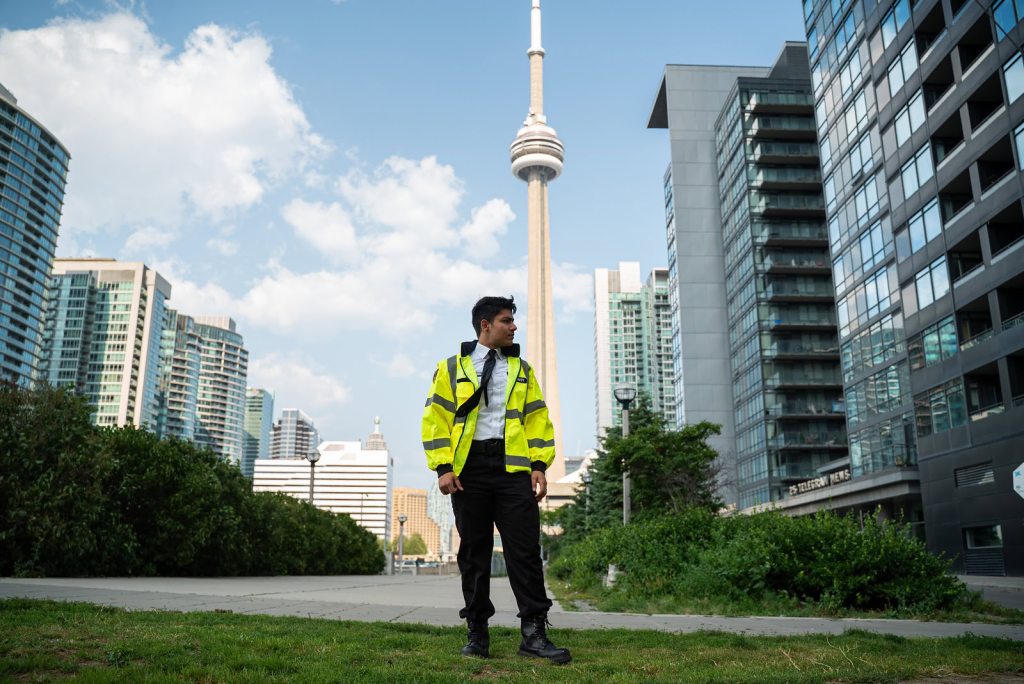
A neighborhood watch is a community effort focused on reducing crime by bringing residents together to observe and report suspicious activity. It acts as a bridge between neighbors and local law enforcement, strengthening communication and helping everyone stay informed about safety concerns.
The goal is simple: create a safer, more aware community. Regular meetings and shared updates help residents learn practical crime prevention tips and stay ready to respond in an emergency. These programs also encourage strong relationships among neighbors, which makes it easier for people to look out for one another.
A neighborhood watch works best when everyone feels welcome. Groups often use tools like social media, email updates, and simple training sessions so that members understand how to report incidents responsibly and respectfully. With clear communication and shared commitment, a neighborhood watch becomes an important part of keeping the community safe.
How to Start a Neighborhood Watch
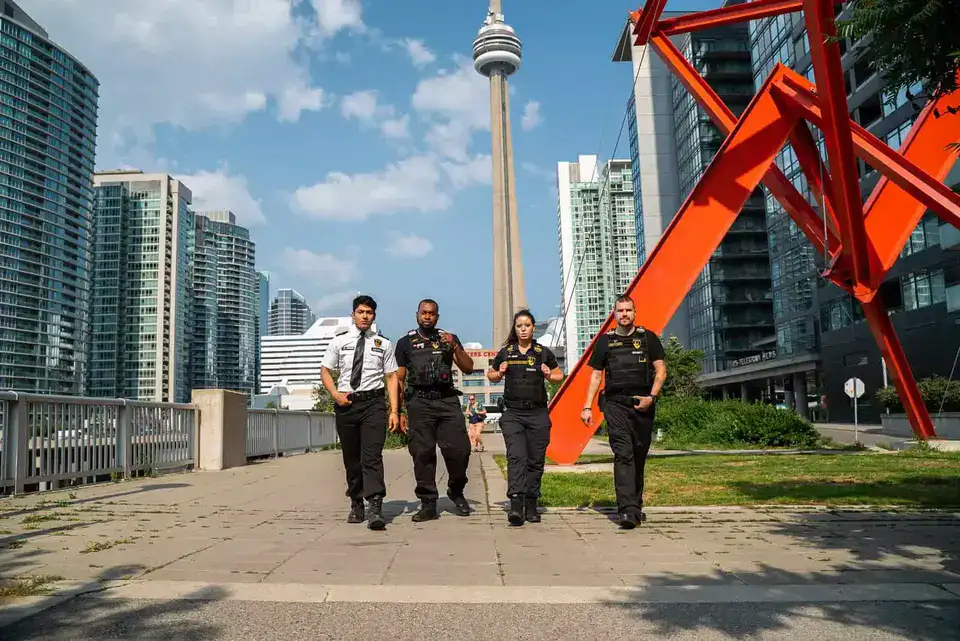
Identify the Need in Your Neighborhood
Start by learning what safety challenges your neighborhood is facing. Check local crime reports from your police department to spot patterns such as rising thefts or recurring break ins. Combine this with conversations or quick surveys among neighbors to understand how safe people feel and what problems they’ve noticed.
Look for common themes in the feedback. If several residents mention late night disturbances or package theft, those can become early priorities for the watch. Connecting with local officers can also give you helpful context about crime trends and seasonal changes in activity.
Consider the layout and demographics of your area too, since these factors often influence safety concerns. You might also review existing community programs to see what is already working and where gaps exist. A clear assessment helps you build a watch that directly responds to the needs of your neighborhood.
Gather Interested Neighbors
Once you understand your community’s needs, start inviting neighbors to join. Use tools like community boards, flyers, and local events to spread the word. Online options such as Facebook or Nextdoor groups also make it easy to reach people quickly.
Hosting a casual meet up is a great way to break the ice and discuss shared concerns. Aim for a group of 10 to 20 people to start, which keeps communication simple and manageable. Encourage participation from different parts of the neighborhood so the group reflects the whole community.
Share the benefits of joining, such as increased safety and stronger connections among residents. Personal stories often make the message more meaningful and help neighbors understand why their involvement matters.
Host the First Meeting
Your first meeting sets the tone for the entire watch. Choose an easy-to-access location like a park, community center, or quiet outdoor space. Prepare a simple agenda that covers the purpose of the watch, immediate safety concerns, and the goals you want to achieve together.
Walk through the issues your community is facing and explain how the watch can help address them. Encourage everyone to share their experiences and suggestions. This builds trust and helps people feel invested in the program.
Before wrapping up, set a schedule for future meetings and assign a few basic roles, such as communication leads or block captains. Provide helpful resources for crime prevention so residents feel informed and empowered. End with a clear action plan so everyone knows what will happen next.
Create a Communication System
A reliable communication system keeps your neighborhood watch organized and effective. Choose a main platform that most residents are comfortable using, such as WhatsApp, Facebook Groups, or email. Create a group chat for urgent updates and quick reports of suspicious activity.
Share an emergency contact list that includes local police, fire services, and any relevant community numbers. Set simple guidelines on how to report information clearly and respectfully.
Include neighbors who are not active online by using printed notices or a shared bulletin board when needed. To keep engagement strong, rotate communication responsibilities so everyone feels included and no single person is overwhelmed.
| Communication Method | Description | Best Practices |
| A messaging app for real-time updates. | Encourage all members to join and participate. | |
| Facebook Groups | A platform for discussion and event planning. | Set guidelines for appropriate use. |
| Emergency Contact Lists | Compile essential contacts for quick access. | Ensure all members have the list. |
| Group Chats | A chat feature for immediate alerts. | Rotate responsibilities for updates. |
| For detailed communications and newsletters. | Use clear subject lines to capture attention. |
Establish Rules and Code of Conduct
Clear rules help your neighborhood watch run smoothly and safely. Start with simple safety guidelines that every member understands. Focus on observe-and-report practices, and make it clear that members should never confront anyone who appears suspicious. Lay out how to report incidents, when to contact police, and what details to document.
Privacy matters, so include a confidentiality policy that protects residents’ personal information. Set expectations for how members should communicate with one another, aiming for respect, inclusivity, and cooperation. This helps build a positive environment where people feel comfortable participating.
Add consequences for breaking the rules so everyone knows what happens if standards are not followed. Offering basic conflict-resolution training can also help members handle disagreements in a calm, constructive way.
Before finalizing your rules, gather feedback from the group. When residents help shape the code of conduct, they’re more likely to stay committed and take pride in the watch.
Plan Patrols
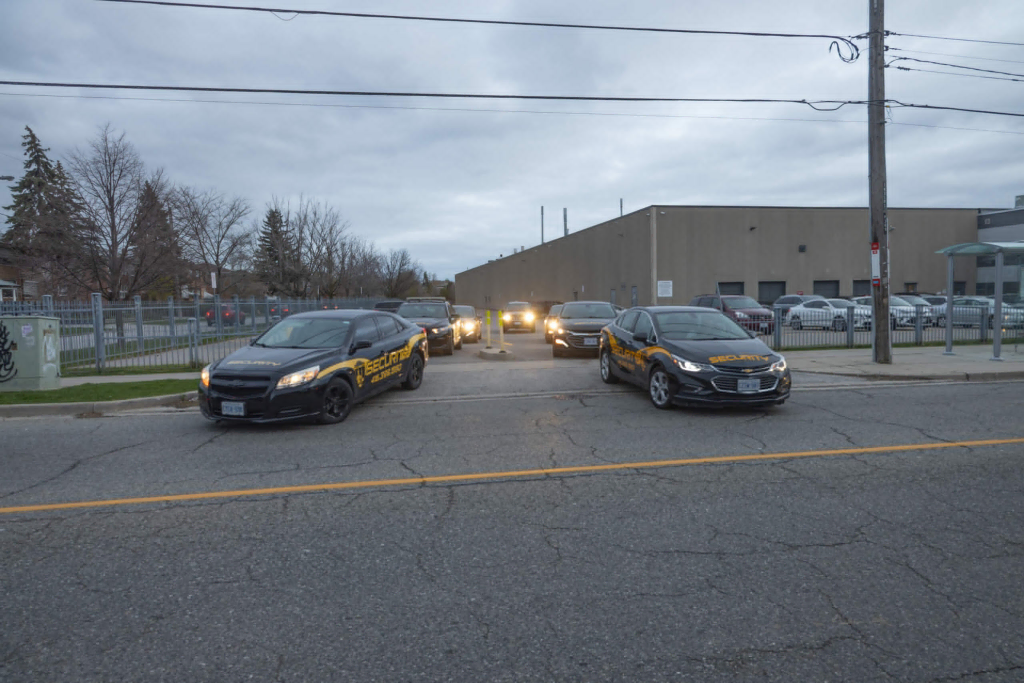
Some neighborhood watches choose to include patrols, while others don’t. If your group decides to move forward with them, start by identifying the times and areas where patrols are needed most. Evenings and weekends are common choices. Focus on places with recurring issues, such as alleys, parking areas, or poorly lit streets.
For safety, encourage members to patrol in pairs. Reflective clothing or vests help increase visibility, which can deter crime on its own. Set up a simple check-in system so volunteers stay safe and accounted for throughout their shift.
Keep the purpose of patrols clear: members should observe and report, not intervene. Create a shared schedule that makes participation easy, and look for chances to increase visibility during community events. Review your patrols every few months and adjust based on what’s working and what isn’t.
Promote Visibility
Visibility is one of the strongest tools a neighborhood watch has. Start by installing watch signs at key entrances and near common gathering areas. Window decals for participating homes add another layer of presence.
Local businesses can also support visibility by displaying posters or sharing information with customers. Community events, like block parties or safety fairs, are great ways to introduce the watch to more residents.
Use social media to celebrate wins, share safety reminders, and keep the community updated. Short updates in newsletters or community bulletins also help maintain awareness. Open house meetings or information sessions give neighbors a chance to learn more and join at their own pace.
If possible, build a simple web page or online hub where residents can find resources, meeting details, and safety tips. Stories from members about how visibility has made a difference can also boost engagement. Partnering with local law enforcement for joint visibility campaigns can strengthen trust and reinforce your efforts.
Keep Your Watch Active and Engaged
Consistency keeps a neighborhood watch alive. Hold regular meetings each month to share updates, discuss concerns, and stay connected. Mix in social gatherings like potlucks or picnics to build stronger relationships among members.
Rotate leadership roles from time to time so new voices can contribute fresh ideas. Use simple surveys or polls to learn what residents want to focus on next. When people feel heard, they stay invested.
Highlight success stories in newsletters, community forums, or social pages. Real examples of positive outcomes motivate members and build trust. Create small committees that handle specific areas, such as outreach or training, to keep tasks manageable.
Offer occasional workshops on first aid, emergency preparedness, home safety, or self-defense. Sharing local crime trends also helps everyone stay alert. Encourage members to invite neighbors to events or meetings so the watch can grow naturally.
Consider hosting an annual community safety fair to showcase your efforts, bring in local services, and strengthen community pride.
When to Bring in a Professional Security Company
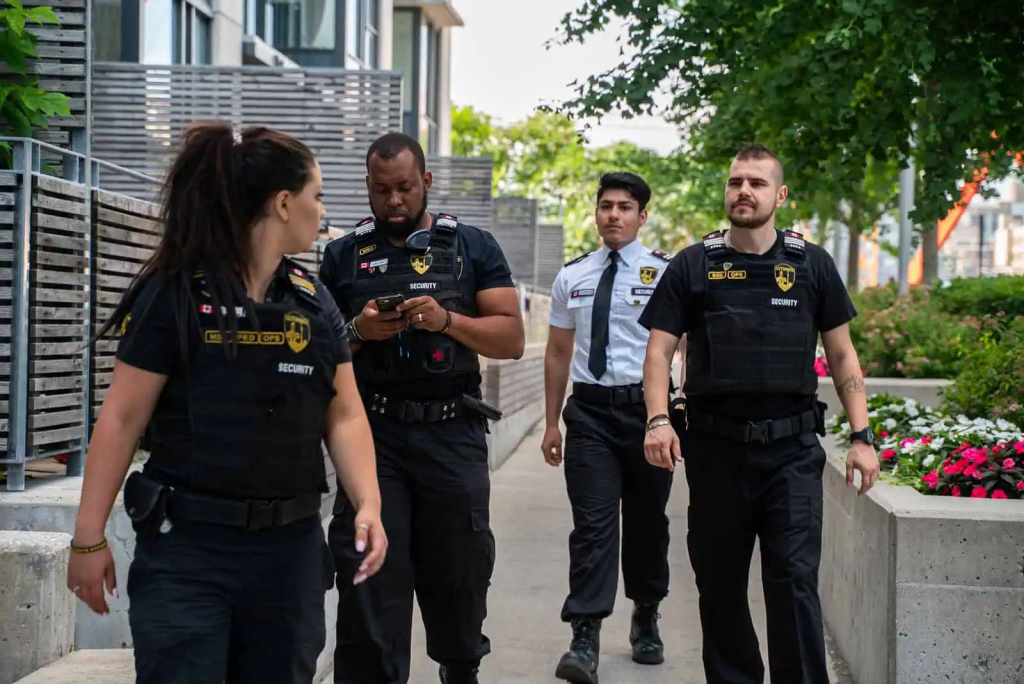
If crime begins to rise in your neighborhood, partnering with a professional security company like Ultimate Security Services can provide the extra protection your community needs. Spikes in property crime, vandalism, or safety concerns during events are signals that professional support can make a real difference. Our trained security teams deter potential criminal activity while giving residents peace of mind.
Ultimate Security Services works closely with neighborhood watch groups to offer tailored solutions. We provide temporary security coverage for events, professional patrol services, and specialized training for members. This ensures your watch group remains effective, confident, and prepared to handle any situation safely.
By collaborating with Ultimate Security Services, your community can benefit from ongoing or temporary security presence without straining resources. Our experts also assist with creating patrol schedules, visibility strategies, and safety protocols. With our support, your neighborhood watch becomes stronger, more organized, and better equipped to protect your community.
Take Action Today for a Safer Neighborhood
Creating a neighborhood watch is more than a safety measure; it’s a way to strengthen connections and foster a true sense of community. When neighbors stay alert and communicate regularly, small efforts add up to a big impact in preventing crime and protecting families.
Ultimate Security Services can help turn your neighborhood watch into a well-organized, confident, and effective initiative. From professional training and communication tools to patrol guidance and event support, we provide the expertise your community needs to stay safe and connected.
Don’t wait for the next incident to take action. Reach out to Ultimate Security Services today to get the support and resources that will empower your neighborhood watch. Together, you can create a safer, stronger, and more united community where every resident feels protected and involved. Contact Ultimate Security Services now and start building the neighborhood you deserve.

Frequently Asked Questions
What steps should I take to start a neighborhood watch?
To start a neighborhood watch, begin by getting to know your neighbors, then organize a meeting to discuss safety concerns, establish goals, and form a group. After that, you can contact local law enforcement for support and guidance.
How do I involve my neighbors in the neighborhood watch?
To involve your neighbors, communicate openly about safety issues, share flyers or social media posts, and invite people to initial meetings. Emphasizing the benefits of a safer community can help encourage participation.
What roles can members have in a neighborhood watch?
Members can take on various roles, such as coordinator, communication officer, and patrol members. It’s helpful to assign specific tasks based on individual strengths and interests.
How can I ensure the neighborhood watch operates effectively?
Ensure effectiveness by holding regular meetings, maintaining open lines of communication, staying informed about local crime trends, and building strong relationships with law enforcement.
What should the neighborhood watch do if they notice suspicious activity?
If suspicious activity is noticed, members should record details and report it to local law enforcement instead of intervening directly. Keeping safety as the priority is key.
TL;DR Starting a neighborhood watch can help enhance safety and build community ties. A neighborhood watch is a group of residents collaborating to monitor suspicious activities and report them to authorities. To begin, assess the need in your area by reviewing crime trends and talking to neighbors. Gather interested residents, host a meeting to set goals, and create a clear communication system. Establish rules, plan optional patrols, promote visibility with signs, and keep everyone engaged through regular meetings and community events. Avoid common mistakes like overstepping boundaries and biased reporting. In certain scenarios, you may want to bring in a professional security company for additional support. Take the initiative to organize your neighborhood watch today and reach out for resources if needed.
